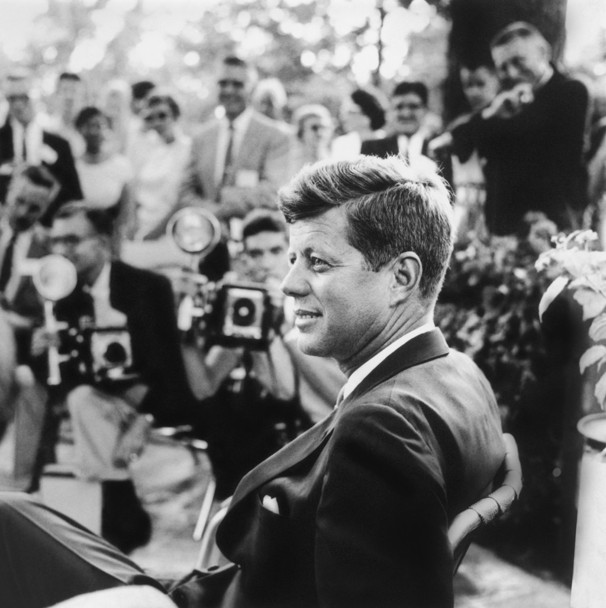There are certain events in history we return to again and again, the controversy and the spectacle surrounding them driving our fascination and drawing us back to look for more. The assassination of John F. Kennedy is one of them, a catalyst of unrest and one of the omens that predicated what would be one of the most tumultuous decades in American history.
To mark the 50th anniversary of the event, the Newseum is displaying two new exhibits of never-before-seen artifacts and photography covering Kennedy’s presidency and assassination.
The first exhibit, “Creating Camelot: The Kennedy Photography of Jacques Lowe,” features the Kennedys’ personal photographer’s snapshots of the family during their time in the White House. One of my favorite photographs from the exhibit is a candid shot of JFK with one of his children, a toddler at the time, because it reminds me that while history books often portray JFK as some great martyred hero-figure, he was also a regular guy (albeit a really, really rich one) who loved spending time with his family, just like everyone else.
The second exhibit, entitled “Three Shots Were Fired,” examines the events following JFK’s assassination in Dallas on November 22, 1963. Consistent with the Newseum’s tradition of using journalism and media as “the first draft of history,” the exhibit uses photographs, articles, television news clips, and other media to demonstrate the enormous socio-cultural impact that JFK’s assassination had on America.
In my opinion, this exhibit is definitely the highlight of the collection; simply being in that room, surrounded by newspaper articles and magazine covers, with Walter Cronkite narrating the events of the assassination on an archaic black-and-white television, effectively transported me back in time and clearly portrayed the confusion and distress people must have felt on that day.
The exhibit also features amazing never-before-seen artifacts that include the long-sleeved shirt Lee Harvey Oswald was wearing during his arrest an hour and 20 minutes after the assassination, and the radio logs recorded by the Dallas Police Department on the day of the assassination.
Lastly, “A Thousand Days” is a Newseum-produced original documentary that recounts the Kennedys’ brief time in the White House. One of my favorite parts about the film was how it highlighted Jacqueline Kennedy’s role following the assassination. While she may have lost her husband, her home, and her social role in a mere six seconds, the strength and dignity she demonstrated in the public eye helped to keep the nation from coming apart at the seams.
Overall, I thought the documentary and both exhibits were phenomenal. Although the exhibits and the documentary do a fabulous job in portraying the human side of JFK and his family, their central purpose is to emphasize the significance of the media’s response to the assassination. Though they put a presidential icon under the spotlight, the exhibits never neglect the journalists telling the story.





